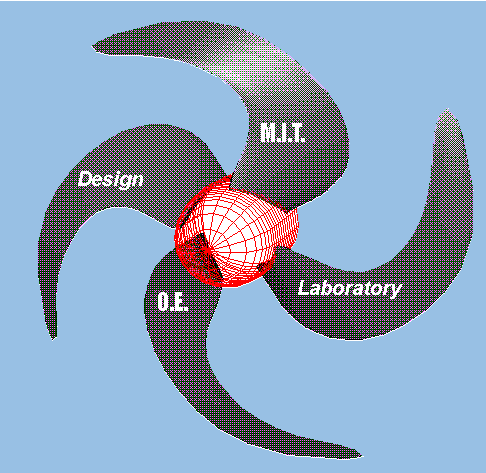

The Praxiteles program is an interactive system for modeling
and manipulating free-form, or sculptured, curves and surfaces. It
provides functions to read, write, convert, generate, interrogate, and
process curves and surfaces. The canonical form for all curves and
surfaces stored in Praxiteles is the non-uniform rational
B-spline, or NURBS. NURBS provide stable and versatile representations
for a wide range of geometric shapes. Praxiteles can manipulate
NURBS of arbitrary degree.
The capabilities of Praxiteles fall into the following four
broad categories:
2D and 3D lists and grids of points, space curves, surfaces (both
untrimmed and trimmed), and surface curves in the IGES Version 5.2
data exchange format.
High accuracy conversion between monomial basis parametric curves and
surfaces and NURBS curves and surfaces.
Creation of point sets, curve and surface fitting by approximation and
interpolation, curves on surfaces, offset curves and surfaces, curve
extraction from surfaces, faceted surfaces based on Delaunay
triangulation, alpha-shape and alpha-hull extraction, and lofted,
ruled, and blending surfaces.
Wireframe, shaded image, and color-coded curvature contour maps.
Curve and surface evaluation. Surface isophotes, reflection lines,
geodesics, and lines of principal curvature. Minimum distances
between point sets and surfaces, unconstrained and constrained
localization for automated inspection, and gross hydrodynamic feature
extraction and feature deviation for blade-like surfaces.
Approximation with degree elevation or lowering, conversion of surface
curves to space curves, knot vector editing, curve and surface
subdivision, and fairing to remove undesirable shape oscillations.